
Sagres is primarily a surfing destination, but there are sheltered pristine beaches for relaxing on and an unassuming cool vibe about the town. Day-trippers are drawn to Sagres by the Cabo de São Vicente, a remote and bleak headland, aptly fitting for the most south-westerly point of mainland Europe.
This is an area of barren, windswept landscapes, towering cliffs, and raging seas. A region for the adventurous, the intrepid, and those who seek to pit themselves against the wild environments. Be that surfing in the turbulent seas, hiking along cliffside trails, cycling deserted roads, or simply basking under the glorious sun.
Prince Henry the Navigator built a fortress here, and although much of it was destroyed in an English attack in 1587 and in a major earthquake in 1755, most of it still stands. An enormous pebble wind compass 43 meters (141 feet) in diameter, thought to have been used to teach navigation, remains clearly visible on the ground, and there’s also a simple but captivating chapel from the 15th century. It was on this site that the prince gathered the most renowned astronomers, geographers, cartographers, and shipbuilders of the time to study the sea and the sky to launch his expeditions.
Nearby is Cape St. Vincent, mainland Europe’s southwesternmost point, known to the Romans as ‘Sacred Promontory’, (the probable origin of the town’s name), and to ancient mariners as the “end of the world.” It was where it was believed the sun sank into the ocean every night, and the awe-inspiring sight, of standing on the cliffs fronting the immense Atlantic, can still make it feel that way today.

The windswept town is cooler than the rest of the region, so it’s not the preferred destination for a holiday in the sun. However, it’s the southern end of Costa Vicentina, which is said to be Europe’s last wild coast, with stunning remote beaches that are ideal for surfing and naturism. A number of surf schools, open throughout the year, offer lessons and rent equipment.
Even in the summer, the town of just around 2000 people is very quiet. Most tourists are surfers, hikers, hippies, and backpackers. Others are day-trippers from Lagos, who visit the fortress and the cape and stay for the sunset. There’s a cool, laid-back vibe, and many prefer that to the more crowded Algarve.
During your trip to Sagres, you will discover beautiful beaches, a unique fort, and some of the most challenging surfing found in Portugal. The town has a low-key and personable atmosphere, where many of the visitors have been drawn to the same passions; the outdoors and the love of the sea.
Surfing is often the main reason why visitors head to Sagres. The town has been blessed with multiple beaches facing differing directions, which ensures that there is always at least one beach suitable for surfing, no matter your ability. Within Sagres, surf equipment can be hired, and there are also surf schools to hone your skills.

Found in the region are challenging hiking trails, quiet roads for cycling, and deep-sea fishing trips departing from Sagres harbor.
For those tourists with a rental car, Sagres can be used as a base to explore the southwestern side of the Costa Vicentina, an area of remote beaches and stunning wild beauty.
What to see and do in Sagres
• Sagres Fortress (Fortaleza de Sagres)
Sagres’ main landmark is the Algarve’s most visited monument. This fort is unique because it has only one defensive wall spanning the southern edge, as the other three are guarded by the immense and sheer cliffs of the headland. The fort is listed as a European Heritage site since it played a major role in the history of Europe. Although it was built in 1453 to protect Portugal’s southern coast, it ended up being Prince Henry the Navigator’s headquarters when he decided to send explorers far out into the Atlantic to find new maritime routes. This led to the so-called ‘Age of Discoveries’,” with Columbus reaching the American continent, Vasco da Gama making it to the East by sea, and Magellan circumnavigating the globe.
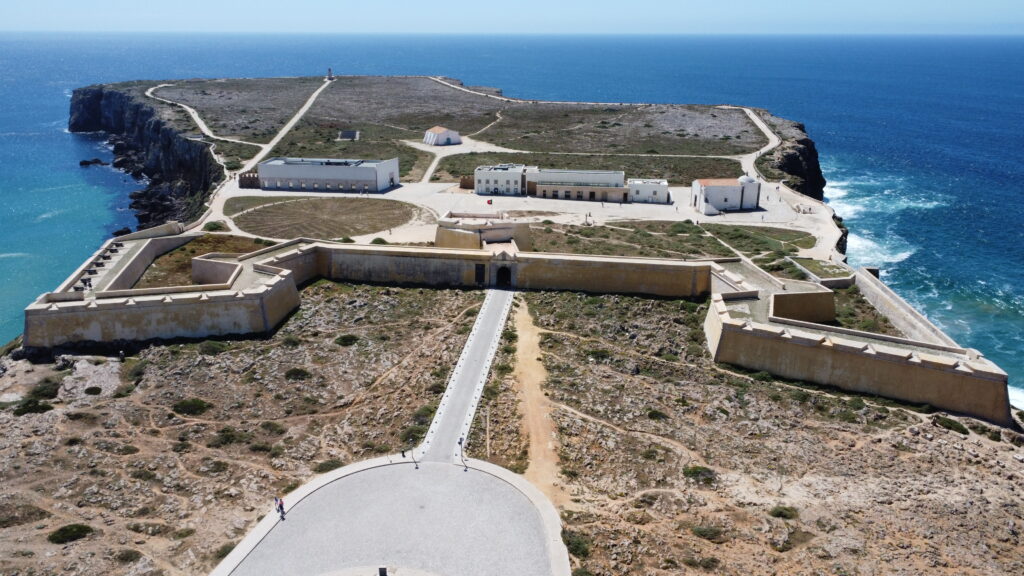
Inside the fort, there is a pleasant 1.5 km cliffside walk, a lighthouse, a grotto, and a large wind compass. Some visitors may be slightly disappointed by the sparseness of the fort, but as with everything in Sagres, the main attraction is the setting and scenery. The fortress’ unique location alone is worth a visit, but its historical significance makes it a must-see on a trip to the Algarve.
• Cape St. Vincent
The Cabo de São Vicente is one of the finest natural features of the Algarve. A lighthouse, standing on a headland, marks the southwestern tip of Europe and what was once believed to be the edge of the Earth. It is not picturesque but immense and dramatic, perfectly reflecting the natural westerly point of Europe. The ferocious waves of the Atlantic Ocean pound the massive cliffs, while high above the immensely bright lighthouse guards the treacherous cliffs.
This lighthouse has a 95 km (60 miles) range and was built in 1846. It is said to be the most powerful lighthouse in Europe. It’s visited for the raw beauty of nature around it, and to stand and take selfies at “the end of the world.” The sheer cliffs are 75 meters tall (about 250 feet) and pounded by the Atlantic. The sound of the waves, powerful winds, and views are truly breathtaking. After visiting the lighthouse, stay on the clifftop for the sunset, which is especially beautiful here. The cape is named after St. Vincent because it’s said that it was here that the saint’s remains were found before being taken to Lisbon in 1173.
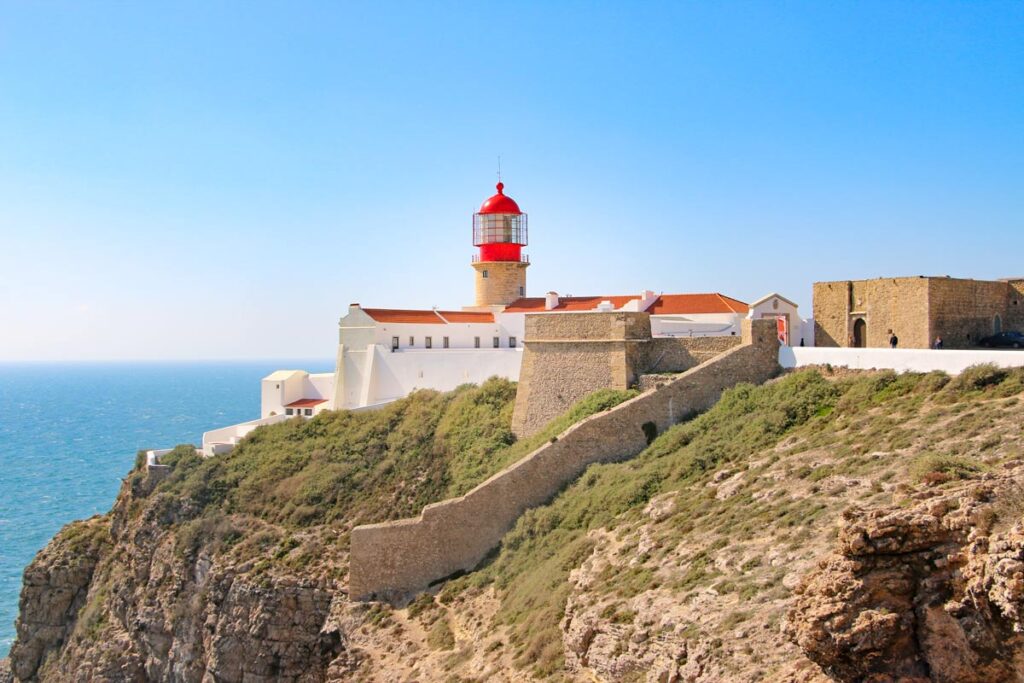
It’s about one-hour walking distance from the center of Sagres, but it’s less than 10 minutes by car.
There are two bus services Monday to Friday from Sagres (originating in Lagos) to Cabo de São Vicente. The bus is convenient as it waits approximately 30 minutes at Cabo de São Vicente before departing, which is usually enough time to see the entire area.
• Beliche Fortress
Just before you reach Cape St. Vincent, you pass by a fortress built in the 16th century to protect the coast and the local tuna fishing industry. It was destroyed by the British in 1587 but rebuilt in 1632. The 1755 earthquake left it badly damaged and it was subsequently abandoned. Mostly restored in the 1950s, it opened to the public but closed again in the 1990s out of precaution, due to the instability of the cliff that it stands on, caused by erosion. This means that you can only see it from outside, but there are striking views of the coast from its top. You can also see the exterior of its 15th-century chapel, which was donated by Prince Henry the Navigator.
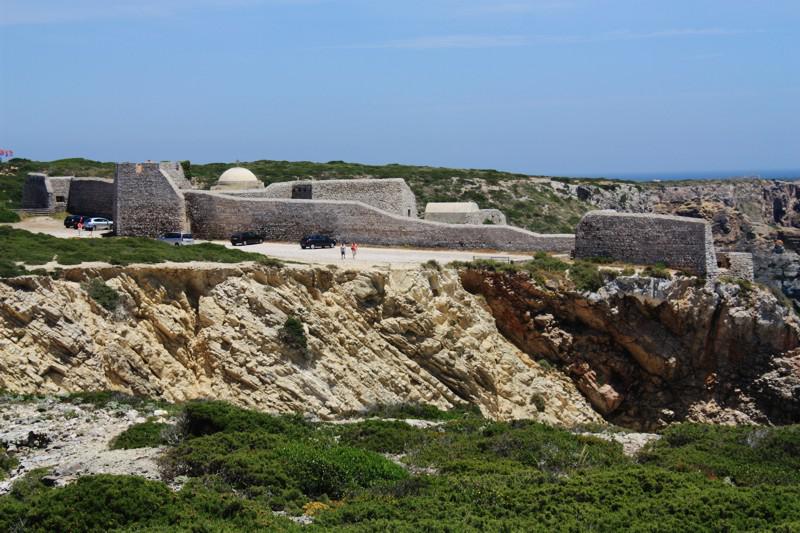
• Surfing in Sagres
Sagres has some of the best surfing waves in Portugal, with massive and powerful swells that roll in unimpeded from the Atlantic Ocean. As it is on a southern extending headland, the beaches of the town face three different directions and some are more sheltered from the waves than others. For surfing, this means that the beaches are suitable for beginners through to highly experienced surfers.
Sagres has many excellent surf schools and is an inexpensive place to learn to surf. Surf equipment can be hired in Sagres, and this avoids the hassle of transporting items. After spending the day in the waters, the bars are filled with like-minded people, and there is a distinct surfer’s vibe in Sagres, especially outside of the tourist season.
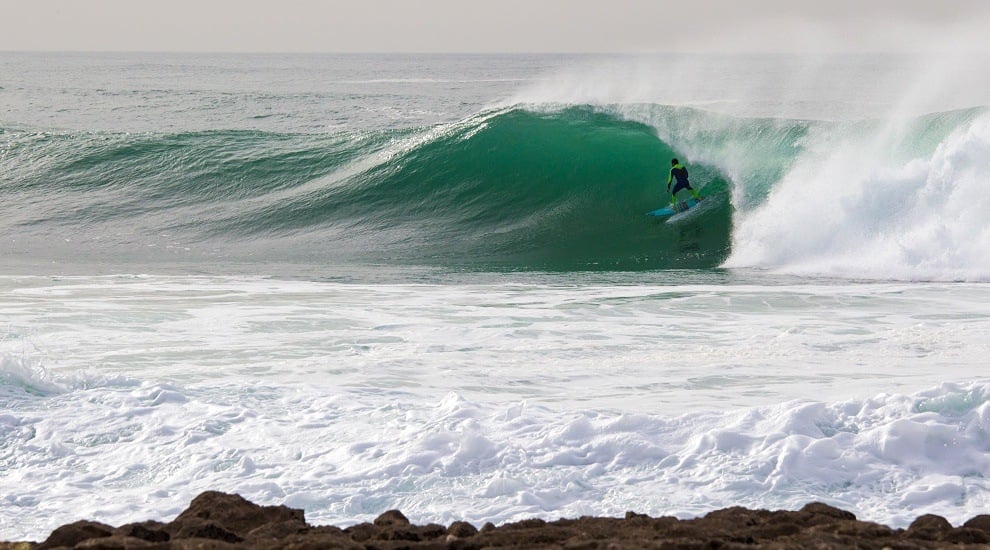
• Hiking in Sagres
There are numerous hiking trails around the town, which is also the starting location for two long-distance routes: the Rota Vicentina and the Via Algarviana. The Rota Vicentina heads north along the Alentejo coastline, while the Via Algarviana crosses the interior of the Algarve.
For more information on both routes, head to their websites:

Sagres Beaches
The beaches of Sagres are simply stunning. The town is situated on a beautiful coastline formed of towering cliffs, powerful seas, and vast sandy beaches. Many of these beaches have stunning natural scenery and are protected from development as are within the Parque Natural do Costa Vicentina.
There is no need to venture far from Sagres to find great beaches, within walking distance of the town are four wonderful beaches. These beaches face the three different sides of the Sagres headland, so one will be suitable for your beach or surf day.
The Praia do Tonel faces a westerly direction and is the most exposed to huge waves, strong winds, and ocean currents. These massive waves combined with the strong currents make it only suitable for expert surfers.
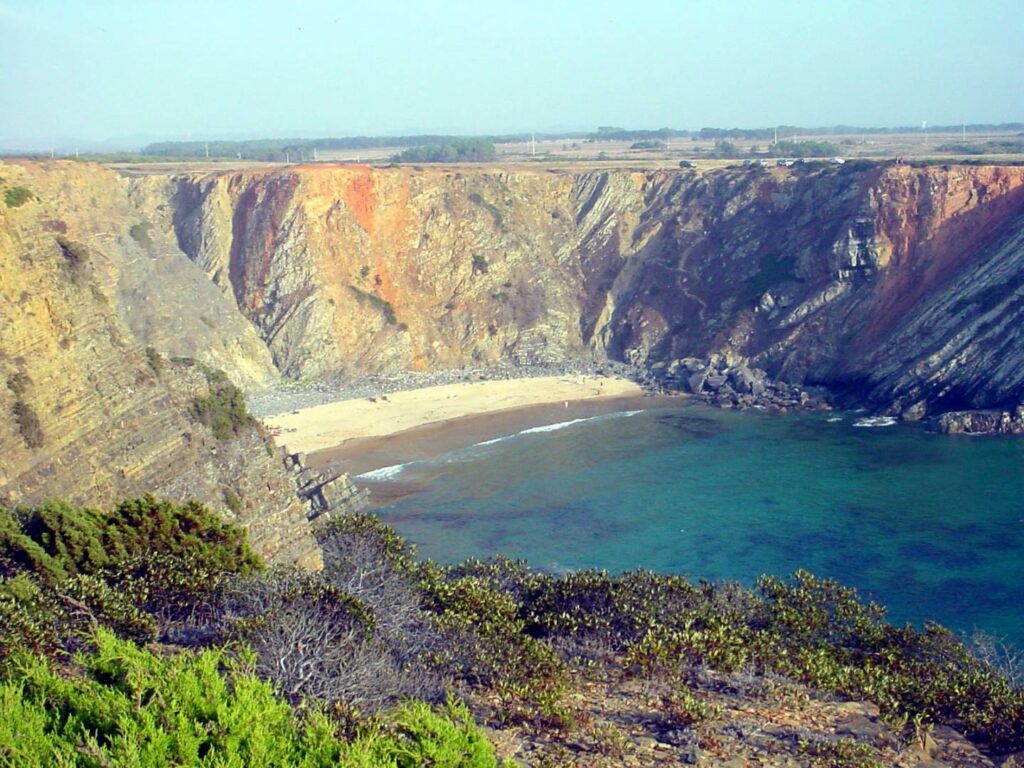
The Praia da Mareta is the most popular beach, offering medium surfing waves, and a large sandy beach, and is semi-sheltered from the powerful sea breezes. This is generally where most people surf.
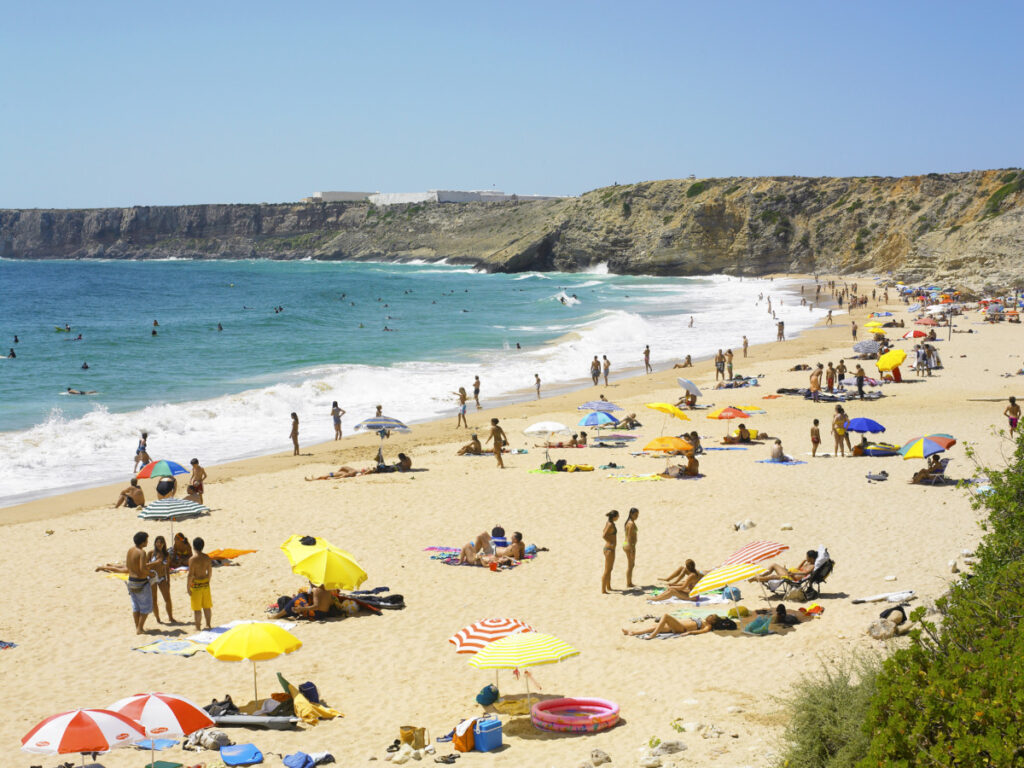
The Praia do Beliche is one of the most popular surfing beaches of the Sagres region, 2 km to the north of the town. Beliche Beach has powerful waves, but the surrounding cliffs provide shelter from the winds and currents.
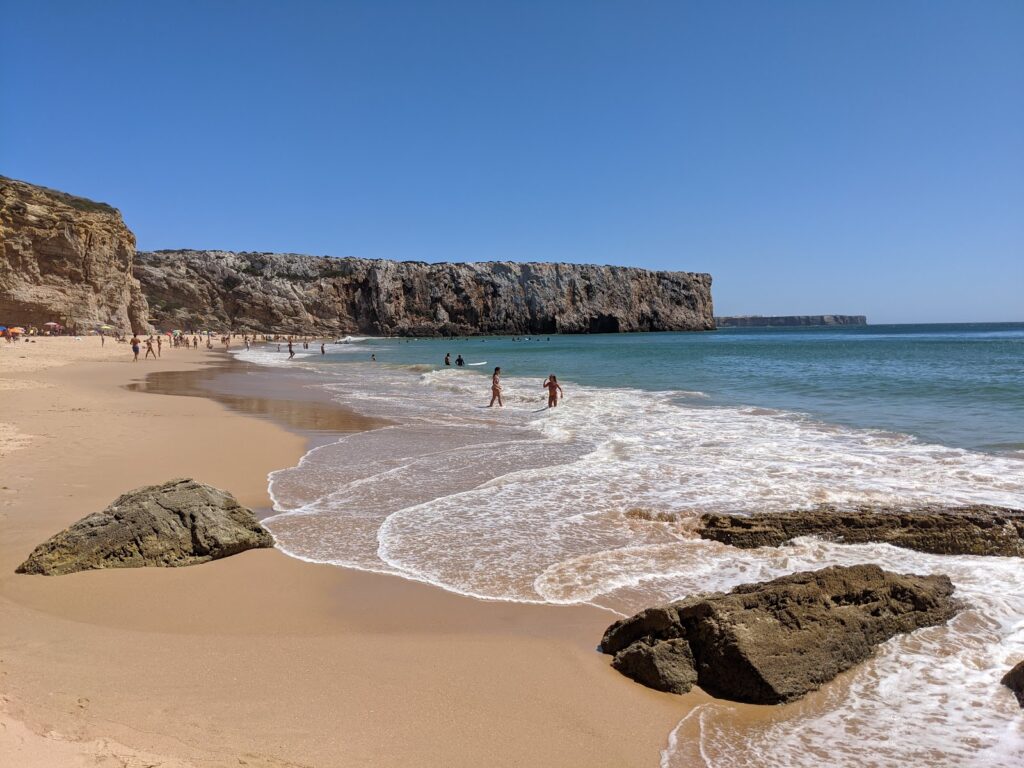
The Praia do Martinhal faces south-east and has a beautiful expanse of golden sands. It provides soft sands, and calm waters and is completely sheltered from the prevailing winds. This is where to head for a conventional day on the beach. The only downside is that it is a little walk from central Sagres and is the most popular during the summer.

The beaches of Sagres may be beautiful, but the region is bracing and barren, being exposed to constant winds, ferocious waves, and strong currents. These characteristics make them ideal for surfing (kite, bodyboard, and normal surfing) and the whole region is a favorite with experienced surfers.
The western coastline of Vila do Bispo has three pristine beaches; the Praia do Telheiro, the Praia do Castelejo, and Praia da Cordoama. The final beach to mention is the outstanding Praia da Bordeira 20 km north of Sagres, wonderful to visit if you have a rental car.
Sagres’ Best Beaches
Best beach: Praia da Mareta – surfing, amazing scenery, and walking distance from the town
Relaxing beach: Praia do Martinhal – glorious sandy beach
Surfing in Sagres: Praia da Mareta and Praia do Tonel – depending on the size of waves and experience
Surfing close to Sagres: Praia do Beliche
For a family: Praia do Martinhal – sheltered from strong waves and currents with lifeguard supervision in the summer
Stunning scenery: Praia da Cordoama and Praia Da Bordeira
There is little variation in the sea water temperature throughout the year ranging from 15°C in the winter to only 19°C in the height of the summer. This lack of variation is attributed to the Atlantic Ocean and the general sea currents from the north and west.
A day trip to Sagres
Sagres makes for an enjoyable day trip if you are based in the western Algarve. A typical day trip to Sagres visits the Cabo de São Vicente, the Fortaleza de Sagres, the fishing harbor, and the Praia da Mareta. Sagres can easily be visited as there are regular and inexpensive bus services.
If you have a car, the day trip could include driving along through the deserted Parque Natural do Costa Vicentina up to the Praia da Bordeira.

Why to stay in Sagres?
A holiday to Sagres will appeal to two main groups of tourists; surfers (kite, surf, or bodyboarding) and visitors who enjoy the outdoors and wish to escape the crowds and mayhem of the central Algarve. Part of the allure of Sagres is the remote setting, but this may deter tourists from wanting a conventional holiday as, apart from the beach and surfing, there is not actually much else to do in Sagres.
Sagres is popular with visitors who are touring southern Portugal, and the town offers a range of modern hotels and family-run restaurants. The town, along with the whole of southern Portugal, is extremely popular in the summer, so if you are seriously considering the region for your holidays, we strongly suggest you book your accommodation now, as it will sell out during the peak months.
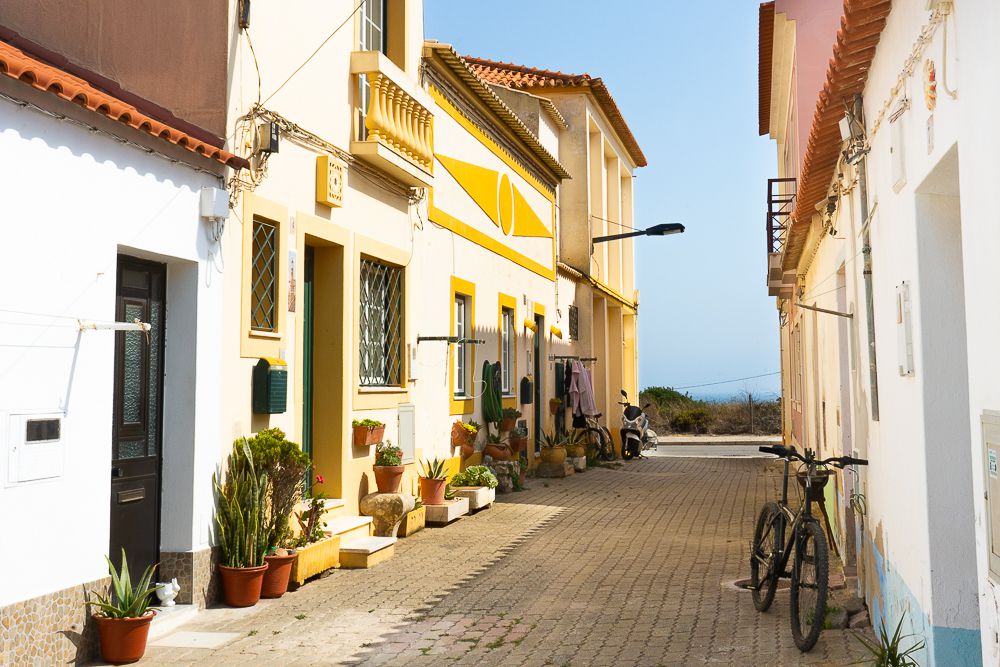
When to visit Sagres?
The peak of the summer season is from June until the end of September, while the best surfing is in late autumn and early winter. However, there is a possibility for surfing almost all year round.
For a holiday, the spring months are the best season to visit Sagres, when the weather is warm and bright but without the intense summer sun. Winters are mild but unpredictable and Sagres will feel very quiet during this time.
How to get to Sagres
Sagres is about 90 minutes from Faro, 35 minutes from Lagos, and just over 3 hours from Lisbon. The town doesn’t have a train station, so if you’re not driving, you can only get there by bus. There’s an express bus service from Lisbon, but no direct bus from Faro or its airport. From Lagos, there’s Vamus bus 47, but avoid going on weekends, when there are only five departures.
An alternative to the buses is using a transfer from the airport or Uber from Lagos.
Accommodation in Sagres








